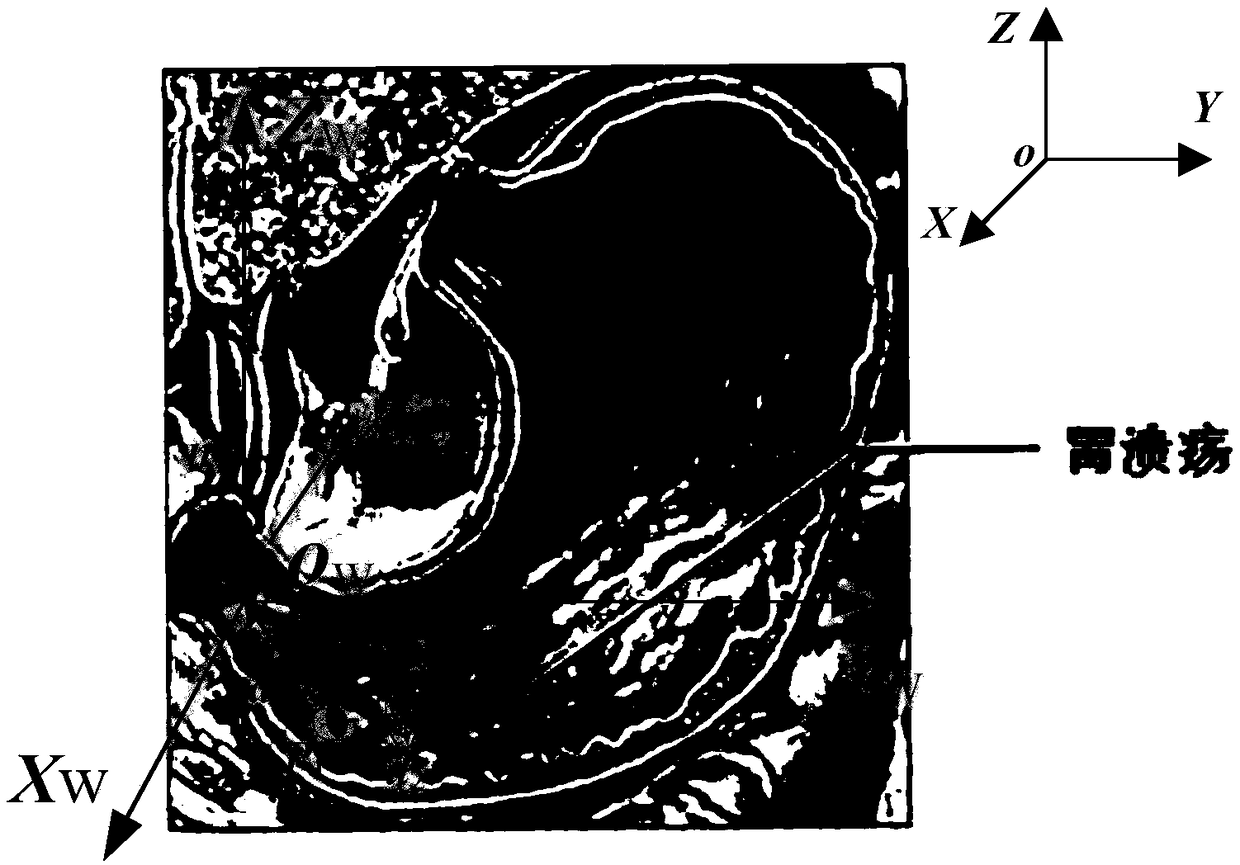Capsule robot in three-dimensional closed unstructured space and relative positioning method of object to be tested
A capsule robot, relative positioning technology, applied in instruments, measuring devices, surveying and navigation, etc., can solve problems that have not yet been raised
- Summary
- Abstract
- Description
- Claims
- Application Information
AI Technical Summary
Problems solved by technology
Method used
Image
Examples
Embodiment 1
[0073] When the capsule robot is in the lower part of the stomach, the positioning of the capsule robot and the target to be measured in the stomach can be implemented according to the following steps:
[0074] (1) After the capsule robot enters the area to be tested (such as Figure 3a shown), through the side swing joystick e 1 with pitch stick e 2 Make the side swing angle θ and the pitch angle δ of the magnetic vector axis change within 0-360° and 0-90° respectively, and the rotating magnetic vector interacts with the radially magnetized NdFeB ring driver embedded in the capsule robot. Under the dynamic effect, the axis of the capsule robot always follows the axis of the rotating magnetic vector to change its orientation and keep consistent with it, thus driving the capsule camera to realize the panoramic observation function based on fixed-point hovering and attitude adjustment in the area to be measured. The camera transmits the real-time images captured by wireless to...
Embodiment 2
[0079] When the capsule robot is in the upper region of the stomach, reference embodiment 1 can carry out the positioning operation according to the following steps:
[0080] (1) After the capsule robot moves to the upper stomach area (such as Figure 5a shown), through the side swing joystick e 1 with pitch stick e 2 Make the side swing angle θ and the pitch angle δ of the magnetic vector axis change within 0-360° and 0-90° respectively, and the rotating magnetic vector interacts with the radially magnetized NdFeB ring driver embedded in the capsule robot. Under the dynamic effect, the axis of the capsule robot always follows the axis of the rotating magnetic vector to change its orientation and keep consistent with it, thus driving the capsule camera to realize the panoramic observation function based on fixed-point hovering and attitude adjustment in the stomach. The camera will transmit the real-time image to the human-computer interaction interface through wireless. Wh...
PUM
 Login to View More
Login to View More Abstract
Description
Claims
Application Information
 Login to View More
Login to View More - R&D
- Intellectual Property
- Life Sciences
- Materials
- Tech Scout
- Unparalleled Data Quality
- Higher Quality Content
- 60% Fewer Hallucinations
Browse by: Latest US Patents, China's latest patents, Technical Efficacy Thesaurus, Application Domain, Technology Topic, Popular Technical Reports.
© 2025 PatSnap. All rights reserved.Legal|Privacy policy|Modern Slavery Act Transparency Statement|Sitemap|About US| Contact US: help@patsnap.com



